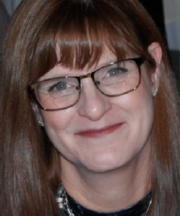
Sometime in the early â80s, my high school sweetheart and I attended a Night Ranger concert. The event was âopen admission,â with no assigned seats. All you needed was a ticket to get in--where you ended up sitting was up to you.
The band was late for the performance. Ticket holders were passed through the outside gates, but the doors to the building remained closed. We were not far from the doors at first, but as more people passed through the outside gates, the crowd pushed us closer, tighter. About 30 minutes late, the double doors to the auditorium opened, and the mob moved forward. By the time the concert started, several people were injured, one quite seriously.
Concert tickets are no longer sold as âopen admission,â because of injuries and deaths related to such situations. That concert is the reason why, forty years later, I do not do crowds. I have seen a gathering of happy, independent music fans instantly become a singular, forceful, mindless mass that absorbed me. The swarm carried me several hundred feet until space allowed the crowd to disperse and release me. I was reminded of the experience as I watched the mass of people pushing, pushing into our Capitol this past week.
People behave well when they are organized and individual. But the same individual, when he or she becomes part of the crowd, displays a new behavior, swayed by the opinion of the crowd. Thereâs a term for this, referred to as the âcrowd effect.â Crowds have a mind of their own. Individuals exist apart but their thinking processes are stimulated by each otherâs feelings and intentions and they act as one. Such crowd effects are seen in massive social mobilizations and social movements across the world.
âCollective behaviorâ describes the actions, thoughts, and feelings of relatively temporary and unstructured groups of people. Collective behavior is emotional and irrational and results from the hypnotic influence of the crowd.
How do such events come to pass? How did this ever become possible in our country? Many scientists suggest the root cause is social disorganization. They believe collective behavior erupts as an unpleasant symptom of frustration and malaise stemming from cultural conflict, organizational failure, and other social malfunctions. Revolutionary theorists believe collective behavior is a release of creative impulses from the repressive effects of established social orders.
Mass movements and crowds offer a gratifying escape from the personal isolation and powerlessness people experience in the bureaucracies of modern life. According to Britannica online, âfrustration and lack of firm social anchorage are the two most widely used explanations for individual participation in collective behavior⦠frustration heightens suggestibility, generates fantasy, brings about regressions and fixations, and intensifies drives toward wish fulfillment.â This collective behavior overcomes normal inhibitions. Participation supplies a sense of meaning through group affirmation and action and raises the memberâs estimate of his social status.
Leaders of such collective behavior are often âtrue believers,â who overcome their own personal doubts and conflicts by creating intolerant and unanimous groups about them. Collective behavior includes âcircular reactions,â where individuals react by repeating the action or sentiment of another person, thereby feeding and escalating the action or sentiment in the originator.
Crowds bring out peopleâs instinctive primary emotions, namely anger and fear. Because everyone experiences those basic emotions, and are less likely to share more complex emotions, the basic emotions spread rapidly. People in crowds begin to feel anonymous and become more suggestible. This creates an environment where people do what they have always wanted to do but, previously lacked the occasion and like-minded support.
As one amongst a crowd of many, individuals become literally, a part of the crowd. They grow a sense of being untouchable and lose any sense of personal responsibility. Deindividuation reduces objective self-awareness. Attention is drawn away from the self, distracting from their own behavior concerning internal norms and standards.
After the 19th century riots in France, scientists labeled this loss of personal control as âcontagion.â A lack of responsibility that spreads through the crowd until everyone thought and acted the same. This âcrowd contagionâ the scientists claimed, led to mass chaos -- uncontrolled and impulsive behavior. However, more recent studies propose that in most crowds, a single mood and course of action is established with such force and intolerance that those who privately dissent are silenced, creating a mere illusion of unanimity.
My recent study of crowd psychology was sparked by the terminology used by the media and elected officials when describing the surge on the Capital last week. I found myself wondering at what point a crowd becomes a mob, when a mob becomes an insurrection. Who is to blame? Who or what do these people represent? How could this happen in our beloved democratic nation? Who do we hold accountable?
Sigmund Freud noted the key to collective behavior as âa desire to possess a beloved leader.: Because the leaderâs âattentionsâ must be shared among his many followers, the demand for uniformity pushes out any tolerance for individual dissent.
Sociologists see collective behavior as a normal accompaniment and medium for social change. Perhaps recent events, as incredulous as they may seem, will propel us towards a better future. Perhaps we will learn the dangers of the crowd mentality, another contagion affecting our country. The only vaccine can be derived from a mixture of diversity, empathy, tolerance, and understanding. Letâs vaccinate each other.
You can subscribe to Lisaâs seasonal newsletter at  tinyurl.com/two-2020  or visit her at  Lhayesminney.net
| 


